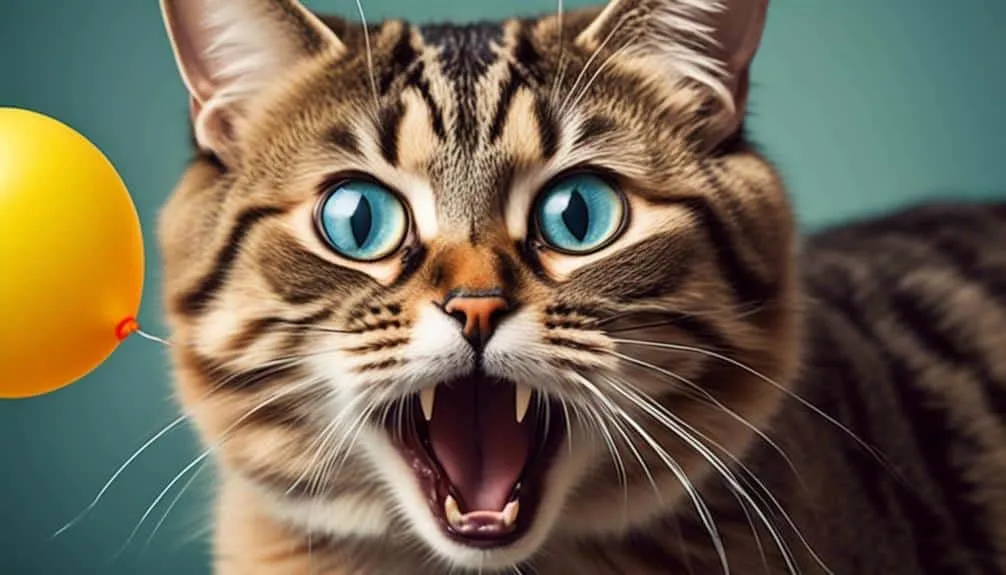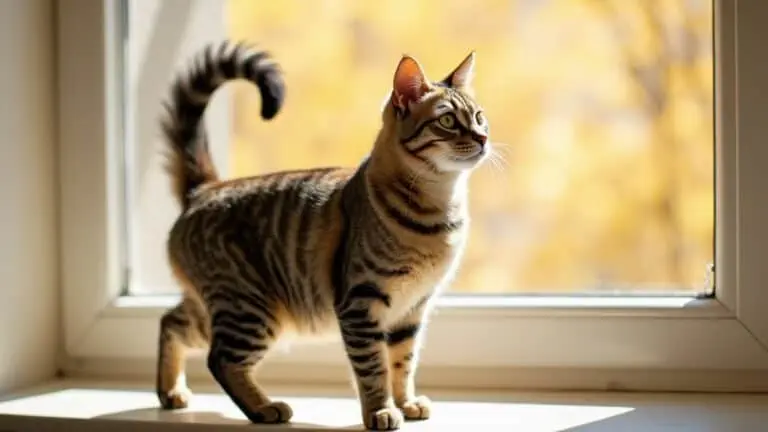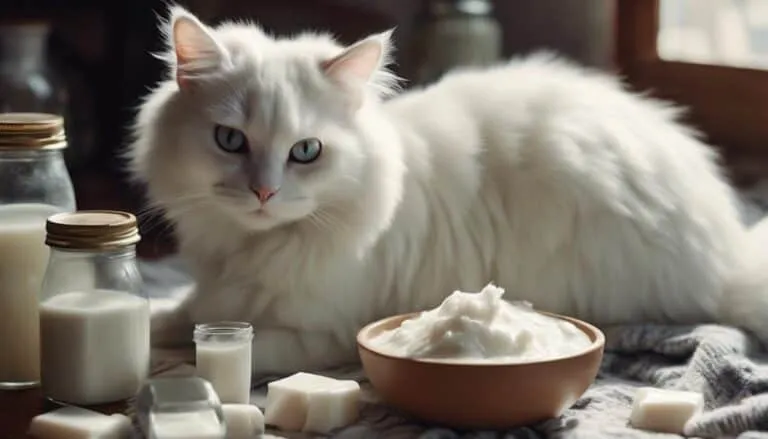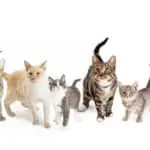The Best Fluffy Pancakes recipe you will fall in love with. Full of tips and tricks to help you make the best pancakes.

Cats are curious creatures, known for their unpredictable behavior and occasional penchant for swallowing objects they shouldn't. In the case of a cat swallowing a balloon, it is vital to act swiftly and efficiently to prevent any potential harm or complications. However, the urgency of the situation should not overshadow the importance of taking the right steps in a calm and composed manner.
In this article, we will discuss the initial actions to take when a cat swallows a balloon, including the crucial role of evidence collection and balloon retrieval. We will then explore the option of inducing vomiting as a potential solution, considering the implications and timing involved. Additionally, we will delve into the significance of X-rays in detecting potential blockages caused by the balloon and highlight the essentiality of consulting a veterinarian, irrespective of the cat's immediate condition.
It is important to note that the information provided here is not a substitute for professional veterinary advice, and seeking immediate assistance from a veterinarian is strongly recommended. So, let's dive into the urgent steps to take when a cat swallows a balloon, ensuring the safety and well-being of our feline friends.
Key Takeaways
- Collect as much of the balloon as possible for the veterinarian's assessment and potential retrieval.
- Vomiting may be necessary to remove the balloon, but consultation with a veterinarian is essential.
- X-rays can help detect intestinal blockage caused by the balloon, but they may not show the balloon itself.
- Consulting a veterinarian is crucial, even if the cat appears to be fine, as untreated blockages can worsen over time.
Collecting Evidence and Balloon Retrieval
Collecting evidence and retrieving the balloon are crucial steps to take if your cat has swallowed a balloon. It is important to collect all parts of the balloon that you can find, even if it is difficult to determine if any part is missing. This evidence will be helpful for the veterinarian in assessing the situation. Finding most of the balloon can provide reassurance and may allow the veterinarian to monitor its passage through radiographs.
Not seeking veterinary care can pose potential risks, as blockages can form over time and worsen if left untreated.
To prevent future incidents, balloon safety education is essential. By educating ourselves and others about the dangers of balloons, we can ensure the safety of our pets.
Vomiting as a Solution
Vomiting may be considered as an appropriate initial step in addressing the issue of a cat swallowing a balloon. By inducing vomiting, there is a potential to remove the balloon from the cat's system before it moves further down the gastrointestinal tract. It is crucial to act quickly before the balloon causes potential risks such as intestinal blockage.
Although there are other methods of balloon retrieval, their effectiveness may vary. Collecting evidence and balloon retrieval may not guarantee the complete removal of the balloon, making vomiting a more immediate solution. It is important to consult with a veterinarian to determine if vomiting is necessary and to monitor any changes in the cat's digestive system through X-rays.
Prompt action is necessary to prevent complications and ensure the cat's well-being.
X-Rays and Balloon Detection
X-rays are a valuable diagnostic tool for detecting intestinal blockages caused by swallowed balloons in cats. However, there are limitations to using x-rays for this purpose. Here are some important points to understand about x-ray detection of balloon ingestion:
- X-rays may show signs of intestinal blockage, but they cannot directly visualize the actual balloon. This is because rubber and plastic materials, which balloons are made of, are radiolucent and do not show up on x-rays.
- Changes in the cat's digestive system, such as abnormal gas patterns or dilated intestines, may indicate the presence of a balloon causing a blockage.
- The exact amount of the balloon ingested cannot be immediately determined through x-rays alone.
Despite these limitations, x-rays can still be helpful in detecting intestinal blockages caused by swallowed balloons. Veterinarians can monitor changes in x-rays over time to check for signs of a blockage and determine the best course of action to address the situation.
If your cat has swallowed a balloon, it is crucial to consult a veterinarian for proper diagnosis and treatment.
Importance of Consulting a Veterinarian
Seeking immediate veterinary consultation is essential when a cat has swallowed a balloon. Delaying veterinary intervention can pose serious risks and result in long-term consequences for the cat.
Even if the cat initially appears fine, consulting a veterinarian is necessary because blockages can form over time and worsen if left untreated. Inducing vomiting may be an appropriate first step, but only a veterinarian can determine the best course of action.
X-rays can help detect intestinal blockages, but they may not show the actual balloon. By monitoring changes in the cat's digestive system and conducting follow-up x-rays, the veterinarian can take appropriate action.
Intestinal blockage is a severe condition that should never be left untreated, highlighting the importance of consulting a veterinarian promptly when a cat swallows a balloon.
Closing Thoughts
When addressing the issue of a cat swallowing a balloon, it is crucial to remember that prompt veterinary consultation is paramount, as delaying intervention can have severe consequences for the feline. The potential risks associated with a cat swallowing a balloon include intestinal blockage, which can lead to discomfort, pain, and even life-threatening complications.
To prevent such incidents, it is important to take the following steps:
- Keep balloons and other small objects out of reach of cats to minimize the risk of ingestion.
- Supervise cats during playtime to ensure they do not have access to balloons or other potentially hazardous items.
- Consider providing cats with safe alternatives for play, such as interactive toys or puzzle feeders, to satisfy their natural curiosity and prevent them from swallowing foreign objects.
Potential Risks of Not Taking Action
Failure to take prompt action when a cat swallows a balloon can result in potentially dangerous consequences for the feline's health. The risks of not taking action include the possibility of an intestinal blockage, which can lead to severe complications such as perforation, infection, or even death.
The balloon may become lodged in the cat's digestive system, obstructing the passage of food and causing discomfort. If left untreated, the blockage can worsen over time, leading to a life-threatening situation. Additionally, the balloon may release harmful chemicals or toxins as it breaks down in the cat's stomach, further compromising its health.
It is crucial to consult a veterinarian immediately to mitigate these risks and ensure the cat's well-being. Taking prompt action can prevent potentially devastating consequences and provide the best chance for a positive outcome.
Preventing Future Incidents
To prevent future incidents of cats swallowing balloons, it is essential to implement proactive measures that promote the safety and well-being of feline companions. Here are some balloon ingestion prevention and pet proofing strategies to consider:
- Keep balloons out of reach: Store balloons in a secure location where cats cannot access them.
- Supervise playtime: When playing with balloons, ensure that your cat is supervised to prevent accidental ingestion.
- Provide alternative toys: Offer engaging and interactive toys specifically designed for cats to redirect their attention away from balloons.
Frequently Asked Questions
How Long Does It Typically Take for a Balloon to Pass Through a Cat's Digestive System?
The time it takes for a balloon to pass through a cat's digestive system can vary. It is important to consult a veterinarian for guidance on balloon retrieval techniques and to monitor the cat's condition closely.
Can a Cat Safely Pass a Balloon Without Any Medical Intervention?
A cat swallowing a balloon may lead to a balloon obstruction. It is not safe for a cat to pass a balloon without medical intervention. Immediate emergency veterinary care is necessary to prevent potential complications and ensure the cat's well-being.
Are There Any Signs or Symptoms to Look Out for if a Cat Has Swallowed a Balloon?
Signs or symptoms of a cat swallowing a balloon may include vomiting, decreased appetite, abdominal discomfort, and changes in bowel movements. If your cat has swallowed a balloon, contact a veterinarian immediately for guidance on necessary steps to take.
What Are the Potential Complications or Risks Associated With a Cat Swallowing a Balloon?
Potential complications and risks associated with a cat swallowing a balloon include intestinal blockage, which can lead to severe health issues if left untreated. Immediate veterinary consultation is necessary to assess the situation and take appropriate action.
How Can I Prevent My Cat From Swallowing Balloons in the Future?
To prevent your cat from swallowing balloons in the future, it is important to cat-proof your home. This can be done by keeping balloons out of reach, storing them securely, and supervising your cat during events where balloons are present.
Conclusion
In conclusion, when a cat swallows a balloon, it is crucial to act promptly and involve a veterinarian. Collecting all parts of the balloon and considering inducing vomiting are important steps to take.
X-rays play a vital role in detecting potential blockages, and consulting a veterinarian is essential regardless of the cat's immediate condition. Neglecting to take action can lead to serious risks for the cat's health.
Remember, 80% of cats who ingest foreign objects require surgical intervention, emphasizing the urgency of seeking professional help.








